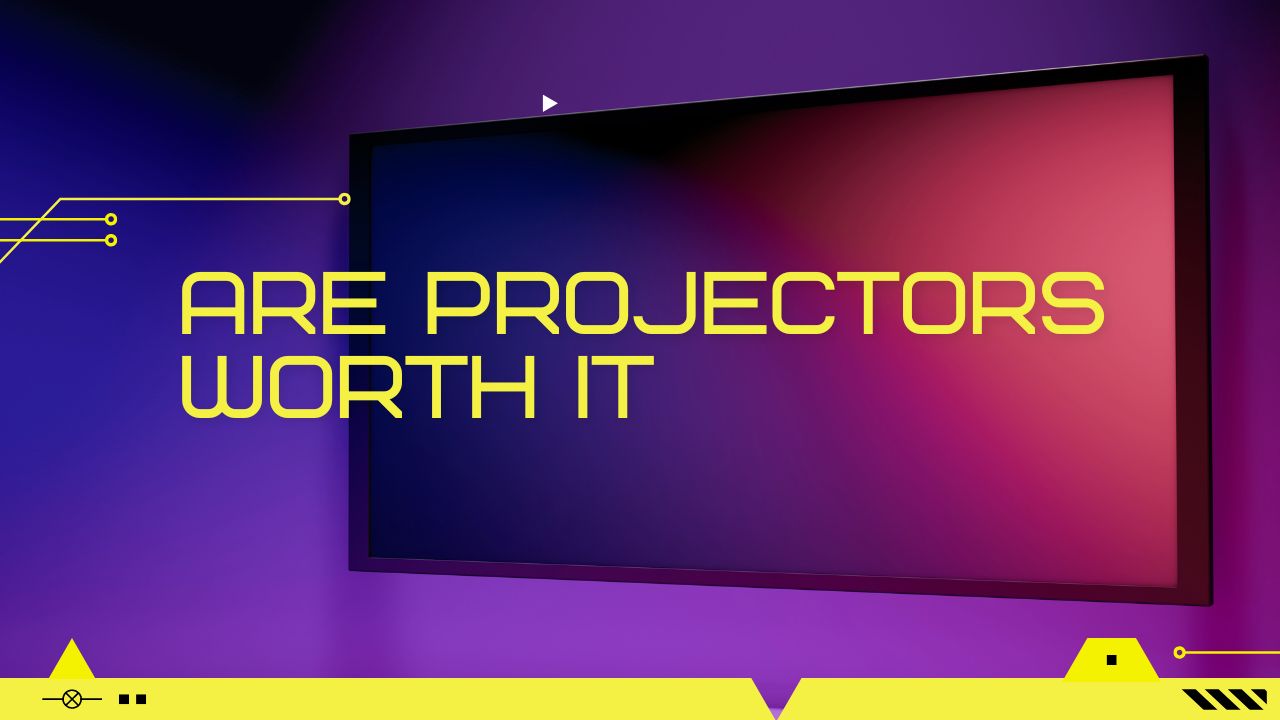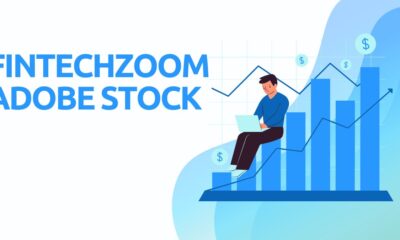NEWS
Are Projectors Worth it? The Ultimate Guide to Elevating Your Viewing Experience

Introduction Are Projectors Worth it?
In today’s digital age, the way we consume media, conduct business, and educate our next generation has evolved dramatically. Among the tools that have risen in popularity are projectors. But are they truly worth the investment? This blog aims to answer that question for three primary audiences—home entertainment enthusiasts, business professionals, and the education sector. By the end of this post, you’ll have a comprehensive understanding of projectors, their benefits, costs, and whether they are the right choice for you.
Understanding Projectors
Types of Projectors
When it comes to projectors, there are several types to consider based on your specific needs.
Home Theater Projectors
Designed for movie buffs and gamers, home theater projectors offer high resolutions, vibrant colors, and a true cinematic experience. They are perfect for large screen sizes and immersive viewing.
Business Projectors
Business projectors are tailored for presentations, meetings, and conferences. They often have features like wireless connectivity, multiple input options, and robust brightness levels to perform well even in well-lit rooms.
Portable Projectors
These are compact, lightweight, and versatile, making them ideal for on-the-go presentations or impromptu movie nights. Despite their size, many portable projectors still offer decent resolution and brightness.
Features to Look For in a Projector
So what should you look for when choosing a projector? Here are some key features:
Resolution
Resolution determines the clarity of the image. Common resolutions include 720p, 1080p, and 4K. Higher resolutions are better for detailed images and text.
Brightness
Measured in lumens, brightness is crucial for visibility, especially in well-lit rooms. For home theaters, 1500-3000 lumens is usually sufficient. Business and education projectors may require 3000 lumens or more.
Connectivity
Modern projectors come with various connectivity options, including HDMI, USB, and wireless capabilities. Ensure the projector you choose is compatible with your devices.
Benefits of Projectors
Enhanced Home Entertainment Experience
For home entertainment enthusiasts, projectors offer an unparalleled viewing experience.
Movie Nights
Imagine transforming your living room into a cinema with a massive screen and surround sound. Projectors can make movie nights magical, providing an immersive experience that TVs can’t match.
Gaming
Gamers can benefit from projectors due to the larger screen size and better viewing angles. Whether you’re playing solo or with friends, the experience is more engaging and fun.
Streaming
Streaming your favorite shows and videos on a projector elevates the experience. With smart projectors, you can stream directly from platforms like Netflix, Hulu, and YouTube.
Professional Use in Business
For business professionals, projectors can be a game-changer in various settings.
Presentations
Projectors make it easier to present to large groups, ensuring everyone can see the content clearly. They also offer the flexibility to project from laptops, tablets, or even smartphones.
Training
For training sessions, projectors can display training materials, videos, and interactive content, making the sessions more engaging and effective.
Conferences
In conference settings, projectors are invaluable for displaying keynotes, data visualizations, and collaborative documents, enhancing the overall experience.
Education Sector
Projectors have revolutionized the way we teach and learn.
Classroom Learning
In classrooms, projectors can display textbooks, videos, and interactive content, making lessons more engaging and easier to understand.
Interactive Teaching
With the rise of interactive whiteboards and smart projectors, teachers can create a dynamic learning environment. Students can participate more actively, enhancing their learning experience.
Cost Analysis
When considering the purchase of a projector, understanding the costs involved is crucial. This section will break down the initial investment and ongoing expenses for each type of projector.
Initial Investment
The initial cost of a projector varies based on its type and features:
- Home Theater Projectors: These typically range from $500 to $3000 or more, depending on the resolution, brightness, and additional features like 3D support or smart capabilities.
- Business Projectors: Priced between $400 and $2000, these projectors often include features like high brightness and multiple connectivity options.
- Portable Projectors: Generally more affordable, portable projectors can cost anywhere from $100 to $800, depending on their resolution and brightness.
Ongoing Maintenance
Maintenance costs are another important factor to consider:
- Lamp Replacement: Projector lamps can be expensive, ranging from $50 to $600, depending on the projector model. LED projectors, however, have longer-lasting light sources, reducing this cost.
- Filter Cleaning and Replacement: Regular cleaning or replacement of filters is necessary to maintain optimal performance. Filters are usually inexpensive, costing between $10 and $50.
- Energy Consumption: Projectors can consume a significant amount of electricity. Factoring in the cost of electricity is essential for understanding the long-term expenses. More energy-efficient models may lead to savings over time.
Installation and Accessories
The total cost of owning a projector also includes potential additional expenses:
- Mounting Hardware: Ceiling or wall mounts can add $20 to $200 to your budget.
- Screens: While you can project onto a plain wall, a high-quality screen can noticeably enhance image quality. Screens range from $50 to $1000.
- Cables and Adapters: Depending on your setup, you might need additional HDMI cables, adapters, or wireless modules, typically costing between $10 and $100.
By considering both the initial investment and ongoing costs, you can make a well-informed decision that fits your budget and meets your projection needs.
Projector Maintenance and Longevity, Are Projectors Worth it?
Proper maintenance is key to ensuring that your projector remains in optimal condition and extends its lifespan.
Routine Cleaning
Regular cleaning is essential to prevent dust and debris from affecting the projector’s performance. Focus on the lens and air vents.
Lens Cleaning
Dust and smudges on the lens can degrade the image quality. Use a microfiber cloth and a gentle cleaning solution designed for optics to keep the lens spotless.
Air Vent Maintenance
Blocked air vents can cause the projector to overheat. Use compressed air to blow out dust from the vents periodically to maintain proper airflow.
Lamp Care
The projector lamp is a critical component that requires careful handling to extend its life.
Usage Guidelines
Avoid turning the projector on and off frequently as this can reduce the lamp’s lifespan. Allow the projector to cool down properly before unplugging it.
Lamp Replacement
Modern projectors often use LED or laser lamps with a lifespan of up to 20,000 hours. When it’s time to replace the lamp, follow the manufacturer’s instructions carefully to avoid damage.
Software Updates
Keeping your projector’s firmware up to date can improve performance and extend its features.
Checking for Updates
Regularly check the manufacturer’s website for firmware updates. Follow their instructions for downloading and installing any new updates.
Benefits of Updates
Software updates can include bug fixes, new features, and improved compatibility with other devices, ensuring your projector remains current and functional.
Storage and Transportation
When not in use, proper storage and handling of your projector is crucial to maintaining its longevity.
Safe Storage
Store the projector in a cool, dry place away from direct sunlight and extreme temperatures. Use a protective cover to shield it from dust and potential damage.
Careful Transport
When transporting your projector, use a padded carrying case to protect it from bumps and shocks. Ensure it is secure and stable during transport to prevent any internal damage.
Are Projectors Worth It?
Evaluating Your Needs
Before deciding if a projector is worth the investment, consider your specific needs and how you intend to use it. Are you looking for a home theater setup, a business presentation tool, or an educational aid? Identifying your primary usage will help determine if a projector is the best choice for you.
Pros of Using a Projector
Larger Screen Size
Are Projectors Worth it?, One of the most compelling advantages of projectors is the ability to achieve a much larger screen size than most TVs, often exceeding 100 inches, which can greatly enhance the viewing experience.
Portability
Projectors, particularly portable models, offer the convenience of being lightweight and easy to transport, allowing you to use them in multiple locations without hassle.
Versatility
With various connectivity options and compatibility with multiple devices, projectors offer a level of versatility that can suit various environments and applications.
Cons of Using a Projector
Light Sensitivity
Projectors typically require lower light conditions to produce the best image quality. In bright rooms or outdoor daytime settings, visibility can be significantly reduced.
Maintenance
Are Projectors Worth it?, Projectors often require regular maintenance, including cleaning and lamp replacements, to ensure optimal performance. This can add to the long-term cost and effort involved in owning a projector.
Installation
Setting up a projector can be more complex than installing a TV. Factors like mounting, screen selection, and proper alignment play crucial roles in achieving the best results.
Case Studies and User Testimonials
Home Theater Enthusiasts
Are Projectors Worth it? Many home theater enthusiasts praise projectors for their immersive cinematic experience. With the ability to create a true theater-like environment at home, the investment in a high-quality projector proves worthwhile for avid film watchers.
Business Professionals
Professionals in the business sector appreciate the ease with which projectors enhance presentations and meetings. The ability to project content to large audiences efficiently is a key selling point.
Educators
Teachers and educators find projectors invaluable for making lessons more engaging and interactive. The use of projectors in classrooms has been shown to improve student participation and comprehension.
Final Verdict
In conclusion, whether a projector is worth it largely depends on your specific needs and circumstances. For large screen entertainment, professional presentations, and dynamic educational purposes, projectors offer unparalleled benefits. However, considerations regarding light conditions, maintenance, and installation complexity must also be taken into account. Evaluate your requirements carefully to make an informed decision.
Conclusion
Projectors Are Projectors Worth it? offer numerous benefits across different sectors, from enhancing home entertainment to improving business presentations and revolutionizing education.
In today’s world, where visual content plays a crucial role, projectors provide a versatile and cost-effective solution. Whether you’re a home entertainment enthusiast, a business professional, or an educator, the value projectors bring to the table is undeniable Are Projectors Worth it?
If you’re considering making the switch, weigh the benefits against the costs and think about your specific needs. Chances are, you’ll find that projectors are indeed worth it. For those ready to explore the world of projectors, now is the perfect time to make the leap and elevate your viewing experience to new heights.
FAQs
What is the lifespan of a projector lamp, Are Projectors Worth it?
The lifespan of a projector lamp can vary significantly based on the type of lamp and usage conditions. LED and laser lamps typically last up to 20,000 hours, while traditional projector lamps may need replacement after 2,000 to 5,000 hours of use. Always follow the manufacturer’s guidelines for optimal performance and lamp longevity.
How do I maintain my projector to ensure it lasts longer?
Regular maintenance is key to extending the lifespan of your projector. This includes cleaning the air filters regularly, allowing the projector to cool down before unplugging it, and storing it in a cool, dry place. Regularly check for firmware updates and handle the projector gently during transport.
Can I use a projector in a bright room?
While projectors perform best in low-light conditions, there are models designed specifically for use in brighter environments. Look for projectors with higher lumens ratings, as these can produce brighter images that are more visible in well-lit rooms.
Is it difficult to set up a projector, Are Projectors Worth it?
Setting up a projector can be more complex than setting up a television due to factors such as mounting, screen selection, and alignment. However, many modern projectors come with installation guides and support options to assist you through the process. Professional installation is also an option for those who prefer a turnkey solution.
What connectivity options do projectors offer?
Projectors typically offer a range of connectivity options, including HDMI, VGA, USB, and wireless connections. This allows them to be connected to various devices such as laptops, gaming consoles, and streaming devices. Always check the specifications of your projector to ensure it meets your connectivity needs.
Are Projectors Worth it?
Many projectors are designed with portability in mind, making them lightweight and easy to transport. Portable projectors often come with features such as built-in batteries and compact sizes, ideal for on-the-go use in different locations. Ensure you use a padded carrying case for extra protection during transport.
Do projectors work with streaming services?
Yes, most modern projectors are compatible with streaming services. You can connect streaming devices such as Chromecast, Roku, or Fire Stick to your projector via HDMI ports, enabling access to a wide range of streaming content. Some projectors also come with built-in smart functionalities and pre-installed apps for direct streaming.
Are Projectors Worth it? Can a projector replace my television?
While projectors offer several advantages, such as larger screen sizes and portability, they may not entirely replace the convenience of a television. Projectors require a dedicated space and specific lighting conditions for optimal performance. Consider your viewing habits and room setup when deciding whether to use a projector as a TV replacement.
NEWS
The Chaleur Ship Sink: Navigating Lessons in Maritime History

The sea has always been a cradle of mystery and adventure, beckoning sailors to explore its vast expanse while reminding them of its unforgiving nature. Among the tales of the ocean, the story of the The Chaleur Ship Sink is a testament to human endeavor and vulnerability. This post dives into the events surrounding the Chaleur, offering maritime enthusiasts, disaster preparedness communities, and environmental activists a detailed exploration of its legacy.
Introduction to The Chaleur Ship Sink
The Chaleur ship once heralded for its technological advancements and robust design, met an unexpected fate that still reverberates through maritime history. Its sinking is more than just a maritime mishap; it is a crucial chapter that underscores the unpredictable power of nature and the limits of human engineering. This blog post aims to dissect the Chaleur ship’s story, from the incident itself to its broader implications on maritime safety and environmental stewardship.
Brief Overview of the Chaleur Ship and Its Significance to Maritime History
The Chaleur was not just another ship; it was a symbol of innovation in maritime design. Built for resilience and efficiency, it was celebrated for its state-of-the-art navigation systems and sturdy construction. Its routes connected vital economic zones, making it a linchpin for the local economy. However, the ship’s sudden sinking shocked maritime communities worldwide, prompting a reevaluation of safety norms and environmental considerations.
The Chaleur Ship Sink
Detailed Account of the Incident
In the early hours of a fateful morning, the Chaleur ship encountered treacherous conditions that tested its capabilities. A confluence of unforeseen circumstances, including severe weather and technical malfunctions, led to its rapid descent beneath the waves. Crew members fought valiantly, but the overwhelming forces of nature proved insurmountable.
Eyewitness accounts from surviving crew and rescue teams paint a vivid picture of the chaos and urgency of those moments. Alarms blared as the ship’s hull breached, and water rushed into compartments meant to be watertight. In less than an hour, the Chaleur was swallowed by the sea, leaving only debris and unanswered questions in its wake.
Analysis of the Factors Leading to the Sink
Several factors contributed to the Chaleur’s demise. First, the ship’s navigation systems failed to accurately predict the severity of the weather. High-speed winds and towering waves exceeded the ship’s design limits. Additionally, an investigation revealed a critical weakness in the hull that had gone unnoticed during routine inspections.
Human error also played a role. Decisions made under stress can often lead to mistakes, and the Chaleur’s crew was no exception. Miscommunications and delayed responses compounded the crisis, ultimately sealing the ship’s fate. This tragic incident highlighted the need for comprehensive training and robust communication protocols in maritime operations.
Impact on the Local Maritime Community and Economy
The Chaleur ship sink sent ripples through the local maritime community and economy. The ship was a vital link in supply chains, transporting goods that fueled regional markets. Its absence created logistical challenges and economic shortfalls, affecting businesses that relied on its deliveries.
Families of the crew faced emotional and financial hardships, prompting local authorities and charities to step in with support programs. The community’s response showcased resilience and solidarity, yet the incident underscored vulnerabilities that remained unaddressed.
Response and Recovery Efforts
Immediate Response Strategies and Challenges Faced
Reacting swiftly to the Chaleur ship sink, rescue operations were launched to save survivors and recover the vessel. However, these efforts were fraught with challenges. The harsh weather conditions that contributed to the sinking persisted, hampering visibility and endangering rescue teams.
Coordination among various rescue organizations was necessary but difficult to achieve. Differing protocols and resource constraints slowed the operation, highlighting the need for a unified emergency response framework in maritime incidents.
Long-term Recovery Plans and Successes
In the wake of initial response efforts, long-term recovery plans were set into motion. These included environmental assessments to gauge the impact of spills and debris on marine ecosystems. Clean-up operations were undertaken to remove pollutants and salvage the ship’s remnants.
A concerted effort to restore affected marine habitats was initiated, involving biologists and environmental organizations. Over time, these recovery programs saw significant successes, rejuvenating ecosystems that had suffered in the wake of the Chaleur’s sinking.
Lessons Learned and Future Implications
Insights Gained from the Incident for Maritime Safety
The Chaleur ship sink left an indelible mark on maritime safety protocols. Investigations into the incident led to recommendations for more stringent inspections of critical ship components. The importance of redundancy in navigation systems was also emphasized, ensuring that ships could operate safely even if primary systems failed.
Training programs were revamped to incorporate real-world scenarios, enabling crews to practice crisis management skills in controlled environments. These measures aimed to prevent similar incidents by equipping maritime professionals with the knowledge and tools to handle emergencies effectively.
Environmental Impact and Efforts for Restoration
The environmental implications of the Chaleur ship sink were profound. Oil spills and debris posed significant threats to marine life, prompting immediate and ongoing restoration efforts. These efforts focused on cleaning affected areas and rehabilitating wildlife impacted by the incident.
Environmental activists played a critical role, advocating for stricter regulations on ship construction and operation to minimize ecological risks. Their initiatives have helped foster greater awareness and accountability within the maritime industry, emphasizing sustainability as a core principle.
How Disaster Preparedness Can Mitigate Future Incidents
The Chaleur’s story serves as a powerful reminder of the importance of disaster preparedness. Establishing comprehensive emergency plans and conducting regular drills can significantly reduce the impact of maritime disasters. Collaboration among international maritime organizations can lead to the development of best practices and standards that enhance safety across global shipping routes.
Investing in technology that provides real-time data on weather conditions and vessel performance can further mitigate risks. By harnessing the power of innovation and collective action, the maritime community can create a safer and more resilient future.
Conclusion
The Chaleur ship sink is a poignant chapter in maritime history, offering valuable lessons on the complex interplay between human activity and nature’s unpredictability. Through analysis and reflection, we gain insights that drive progress in safety, environmental stewardship, and disaster preparedness.
This story is more than a tale of tragedy; it’s a call to action. We must continue to support efforts that prioritize safety and sustainability in maritime operations. By remembering the Chaleur’s legacy and learning from its lessons, we honor the past while shaping a brighter future for the seas we rely on and cherish.
FAQs
What caused the sinking of the Chaleur?
The sinking of the Chaleur was primarily caused by a combination of factors, including a structural weakness in the hull that went undetected during routine inspections, and human errors made under stressful conditions during the crisis.
How did the local community respond to the Chaleur disaster?
The local community responded with resilience and solidarity. Authorities and charities quickly established support programs to help families of the crew members affected by the disaster, addressing both emotional and financial hardships.
What were the environmental impacts of the The Chaleur Ship Sink?
The Chaleur ship sink resulted in significant environmental impacts, including oil spills and debris that threatened marine life. Extensive restoration efforts were undertaken to clean affected areas and rehabilitate wildlife.
What measures have been implemented to prevent future maritime disasters?
In response to the Chaleur tragedy, several safety measures have been recommended and implemented, including stricter ship component inspections, updated training programs for crisis management, and the incorporation of real-world scenarios into crew training.
How can disaster preparedness mitigate future maritime incidents?
Disaster preparedness can mitigate future maritime incidents through comprehensive emergency plans, regular drills, international collaboration for best practices, and the integration of advanced technologies that provide real-time data on weather and vessel performance.
NEWS
Should i turn my lb7 tcm i have 275 tires: Rev Your Ride with LB7 TCM Adjustments for 275 Tires

The world of truck upgrades is vast and exciting, filled with opportunities to enhance performance and tailor your ride to meet specific needs. One such upgrade that often sparks debate among truck enthusiasts and DIY mechanics is whether to turn the Should i turn my lb7 tcm i have 275 tires (Transmission Control Module) when installing 275 tires. If you’ve found yourself pondering this decision, you’re in the right place. In this post, we’ll explore the intricacies of the LB7 TCM, the impact of tire size on vehicle performance, and provide a detailed guide on making the adjustment. By the end, you’ll be equipped with the knowledge to make an informed decision about optimizing your truck.
Understanding Should i turn my lb7 tcm i have 275 tires
The LB7 TCM, or Transmission Control Module, is a crucial component in your truck’s transmission system. It functions as the brain behind gear shifting, ensuring smooth transitions and optimal performance. The module processes data from various sensors to adjust shifting patterns, contributing to both the efficiency and driveability of your vehicle.
In the world of performance upgrades, adjusting the TCM is akin to fine-tuning a musical instrument. It can harmonize various systems of your truck to work in unison, maximizing performance. However, making changes to the TCM isn’t something to be taken lightly, as it can significantly influence how your truck handles, especially when modifying other elements like tire size.
When considering adjustments to your TCM, particularly with new tires, it’s essential to understand the relationship between these components. Mismatched settings can lead to poor performance, decreased fuel efficiency, and even mechanical issues. Thus, any modification requires careful planning and execution.
The Impact of Tire Size on LB7 TCM
Switching to 275 tires can have various implications for your truck’s performance. Larger or smaller tires affect wheel rotations per mile, impacting speedometer accuracy and overall handling. This change in dynamics requires the TCM to adjust its programming to accommodate the new size, ensuring the transmission functions seamlessly.
A primary concern with altering tire size is the potential mismatch between the speedometer reading and actual speed. Larger tires can cause the speedometer to underreport speed, which may have legal and safety implications. To address this, recalibrating the TCM becomes necessary, providing accurate speed readings and maintaining vehicle compliance.
Additionally, tire size influences your truck’s fuel economy. Larger tires can increase rolling resistance, potentially leading to higher fuel consumption. However, with the right adjustments to your TCM, it’s possible to mitigate these effects and maintain efficient performance.
Benefits and Challenges of Turning the LB7 TCM with 275 Tires
Adjusting the LB7 TCM for 275 tires offers several benefits, notably improved handling and speedometer accuracy. Proper calibration ensures that your truck handles predictably, enhancing the driving experience and promoting safety. With accurate speed readings, you can avoid unnecessary fines and maintain legal compliance.
However, this process is not without its challenges. It requires a precise understanding of your truck’s systems and the right tools to implement changes safely. Failure to execute adjustments correctly can lead to suboptimal performance or mechanical issues, underscoring the importance of preparation and expertise.
Another potential hurdle is the impact on fuel economy. While proper tuning can help manage increased rolling resistance, it may not entirely negate the effects of larger tires. Truck enthusiasts must weigh these considerations against the aesthetic and functional benefits of 275 tires.
Step-by-Step Guide to Turning Your LB7 TCM
For those ready to take the plunge, here’s a detailed guide to turning your LB7 TCM for 275 tires:
- Gather Necessary Tools: You’ll need a TCM programmer or tuner compatible with your truck model, a laptop, and the appropriate software for adjustments. Ensure you have a safe workspace and adequate lighting.
- Consult Your Truck’s Manual: Before making any changes, thoroughly review your vehicle’s manual to understand the specific requirements and limitations. Familiarize yourself with the TCM’s location and connections.
- Connect the Tuner: Attach the TCM tuner to your vehicle’s OBD-II port, typically located beneath the dashboard. Follow the manufacturer’s instructions for setup, ensuring all connections are secure.
- Access the TCM Software: Open the tuning software on your laptop and connect it to the tuner. Follow the prompts to access the TCM settings and locate the tire size parameters.
- Adjust Tire Settings: Input the new specifications for 275 tires, ensuring all entries are accurate. Double-check your work before saving changes to prevent errors.
- Test Drive: After updating the TCM, take your truck for a test drive in a safe area. Monitor the speedometer for accuracy and observe any changes in handling or performance.
- Fine-Tune as Necessary: Based on your observations, make any additional tweaks to optimize performance. It may take a few iterations to achieve the desired results.
Tips for Optimizing Performance Post-Adjustment
Once your TCM is adjusted, there are several ways to further optimize your truck’s performance. Regular maintenance is key, including wheel alignments and tire rotations to prevent uneven wear. Monitoring tire pressure also contributes to fuel efficiency and handling.
Consider upgrading other components to complement your new tires and TCM settings. Performance brakes, suspension systems, and enhanced aerodynamics can significantly boost your truck’s overall capabilities. Each upgrade should be evaluated on its merits and compatibility with existing systems.
Engage with the truck enthusiast community to share insights and learn from others’ experiences. Forums, social media groups, and local meetups can provide valuable tips and recommendations for refining your setup.
Real-Life Examples and Testimonials
Truck enthusiasts who have successfully turned their LB7 TCM with 275 tires often share positive feedback about the transformation. Many report smoother driving experiences, enhanced control in diverse conditions, and satisfaction with the aesthetic appeal of larger tires.
John, a DIY mechanic from Texas, noted that after adjusting his TCM, his truck’s handling improved noticeably, especially during off-road adventures. He appreciated the detailed guidance available from online communities, which helped him tackle the project with confidence.
Similarly, Sarah from Colorado found that recalibrating her TCM not only improved speedometer accuracy but also led to better fuel economy than expected. Her success story highlights the potential benefits of thoughtful modifications and the importance of community support.
The Significance of Understanding Vehicle Systems
In conclusion, the decision to turn your LB7 TCM with 275 tires should be informed by a comprehensive understanding of your vehicle’s systems. Optimizing your truck’s performance requires careful consideration of each component’s role and the interplay between them.
By investing time in research and engaging with fellow enthusiasts, you can enhance your truck’s capabilities while avoiding potential pitfalls. Tailored upgrades offer the opportunity to create a truly personalized driving experience, aligning with your unique preferences and needs.
For those interested in further exploration, consider reaching out to experts or participating in forums dedicated to truck modifications. Sharing your experiences and seeking advice can deepen your knowledge and foster a sense of community among fellow enthusiasts.
Ready to take the plunge? We encourage you to share your own experiences or ask questions in the comments below. Let’s continue the conversation and support one another in our pursuit of performance excellence.
Conclusion
Turning your LB7 TCM for 275 tires is a meticulous but rewarding endeavor that can significantly enhance your truck’s performance and aesthetics. By diligently following a step-by-step approach and considering the broader impacts on your vehicle, you can achieve optimal results. The benefits of improved handling, accurate speedometer readings, and the visual appeal of larger tires make this modification a popular choice among truck enthusiasts. Remember, the key to a successful adjustment lies in preparation, precision, and continuous learning. Engage with the community, seek expert advice, and take pride in your customized setup. Embrace the journey of tuning and upgrades, knowing that each adjustment brings you closer to the ultimate driving experience.
FAQs
Q: Is it necessary to use a professional tuner for adjusting my TCM for 275 tires?
A: While it is possible to perform the adjustment yourself with the right tools and knowledge, seeking the assistance of a professional tuner can ensure accuracy and prevent potential errors. If you are unfamiliar with TCM programming, a professional can provide valuable expertise.
Q: Will adjusting the TCM for 275 tires affect my truck’s warranty?
A: Modifying your truck’s TCM may impact the warranty depending on the terms and conditions set by the manufacturer. It is advisable to consult your warranty documentation or contact your dealer to understand how the adjustments might affect your coverage.
Q: How can I ensure my speedometer is accurate after the adjustment?
A: After adjusting your TCM, a test drive is crucial to check the speedometer’s accuracy. Use a GPS device or a speedometer app on your phone to compare readings and make any necessary fine-tuning adjustments through the TCM software.
Q: What other components should I consider upgrading along with the TCM adjustment?
A: To further optimize performance with 275 tires, consider upgrading performance brakes, suspension systems, and enhancing aerodynamics. These complementary upgrades can improve handling, safety, and overall driving experience.
Q: Are there any legal considerations to keep in mind when adjusting my TCM?
A: Yes, ensure that any modifications comply with local regulations and laws. Some jurisdictions may have specific rules regarding vehicle modifications that could impact legality and roadworthiness.
Q: Where can I find support or advice for TCM adjustments and other modifications?
A: Online forums, social media groups, and local truck enthusiast clubs are excellent resources for support and advice. Engaging with the community can provide valuable insights and help you navigate challenges during your TCM adjustment project.
NEWS
Howard Allred Tampa FL Consultant: From Strategy to Execution

In the vibrant landscape of Howard Allred Tampa FL consultant, where businesses strive to thrive amidst competition, there’s one name that stands out in the consulting realm: Howard Allred. With a unique blend of strategy and execution, he transforms visions into reality for countless organizations. His approach isn’t just about providing advice; it’s about crafting tailored strategies that resonate with each client’s specific needs.
Howard understands that success doesn’t merely come from good ideas but from effectively implementing them. Businesses often find themselves at a crossroads—knowing they need change but unsure how to achieve it. That’s where Howard steps in as a guiding force, helping clients navigate challenges and seize opportunities.
Join us as we dive deeper into Howard Allred’s innovative consulting methods and discover why his expertise is invaluable for any business looking to elevate its game in Tampa Bay.
The Importance of Strategy in Consulting
Strategy serves as the backbone of successful consulting. Without a clear direction, efforts can become fragmented and ineffective.
A well-defined strategy helps consultants identify goals and objectives. It aligns actions with desired outcomes, creating a roadmap for clients to follow.
In the competitive landscape of consulting, having a strategic plan sets one apart from the crowd. It’s not just about providing solutions; it’s about understanding the unique challenges each client faces.
Moreover, an effective strategy fosters collaboration between the consultant and the client. This partnership leads to more tailored solutions that resonate on multiple levels.
Embracing strategy in consulting creates a framework for sustainable growth. Clients gain confidence when they see their vision coming to life through structured approaches and actionable insights.
How Howard Allred Implements Strategies in Tampa, FL
Howard Allred tailors his strategies to meet the unique challenges faced by businesses in Howard Allred Tampa FL consultant. He begins with thorough research and analysis of the local market dynamics.
Understanding client needs is crucial. Howard engages closely with stakeholders, ensuring that their voices are heard throughout the process. His collaborative approach fosters trust and openness.
Once he identifies key objectives, he crafts a detailed action plan. This roadmap guides clients through each phase of implementation while allowing for flexibility along the way.
Regular check-ins enhance accountability. Howard believes in adjusting tactics based on real-time feedback and performance metrics. This adaptability ensures sustained growth.
Moreover, his extensive network within Tampa’s business community provides clients access to valuable resources and partnerships that can propel their success forward.
Case Studies: Success Stories from Howard Allred’s Clients
Howard Allred’s clients have experienced remarkable transformations through his tailored consulting strategies. One standout case involved a local retail business struggling with declining sales. With Howard’s guidance, they redefined their market approach and revamped their customer engagement tactics. Within six months, they reported a 30% increase in revenue.
Another client, a tech startup in Tampa, faced challenges scaling operations. Howard implemented streamlined processes that boosted efficiency by over 40%. They successfully launched two new products ahead of schedule.
In the nonprofit sector, Howard worked with an organization aiming to enhance its community outreach. With targeted strategies and focused execution, they expanded their volunteer base significantly while increasing donations by 50%.
These success stories highlight how personalized approaches can lead to impressive results across various industries in Tampa, FL. Each client’s journey showcases the impact of effective strategy and execution combined under Howard Allred’s expertise.
The Role of Execution in Consulting
Execution is where the rubber meets the road in consulting. A well-crafted strategy can only take a business so far without effective implementation. It’s about transforming ideas into action.
In this phase, every detail matters. The execution process requires careful planning, coordination, and communication among team members. Missteps can lead to setbacks that derail even the best strategies.
Consultants must not only create actionable plans but also ensure they are followed through diligently. This is particularly true in dynamic markets like Tampa, FL, where adaptability is key.
Tracking progress and measuring outcomes become essential tasks during this stage. Continuous feedback helps refine processes and encourages teams to stay focused on goals.
Successful execution cultivates trust with clients and fosters long-term relationships built on results rather than just promises.
Implementing Effective Execution Strategies in Tampa, FL
Implementing effective execution strategies is essential for any business looking to thrive in Tampa, FL. Howard Allred emphasizes the importance of aligning strategy with actionable steps.
His approach begins with a thorough assessment of each client’s unique needs and goals. By understanding their vision, he crafts tailored plans that are realistic and measurable.
Next comes the critical phase of mobilizing resources. Howard ensures that teams are equipped with the right tools and training to execute strategies seamlessly. This empowers employees and enhances productivity across all levels.
Regular check-ins help maintain momentum. Adjustments can be made based on real-time feedback, allowing businesses to stay agile in a changing market.
By fostering a culture of accountability, Howard Allred Tampa FL consultant encourages clients to take ownership of their progress, leading to sustainable growth over time in the vibrant Tampa landscape.
Conclusion: Why Howard Allred’s Approach Stands Out in the Consulting Industry
Howard Allred’s approach in Tampa, FL, is a breath of fresh air in the consulting landscape. His blend of strategic insight and practical execution sets him apart from others in the field.
Clients appreciate his hands-on methodology. He doesn’t just provide advice; he rolls up his sleeves to help implement plans that drive real results.
What makes Howard unique is his dedication to understanding each client’s specific needs. This personalized touch fosters trust and long-term relationships, which are essential for success.
Moreover, his track record speaks volumes. The success stories resonate throughout Tampa and beyond, showcasing how effective strategies transform businesses.
In an industry often cluttered with generic solutions, Howard stands out as a beacon of innovation and effectiveness. His commitment to excellence continues to elevate standards within the consulting sector.
FAQs
When considering the journey of consulting, questions often arise. Here are some of the most frequently asked queries about Howard Allred and his approach as a consultant in Tampa, FL.
What makes Howard Allred different from other consultants?
Howard focuses on tailored strategies that fit each client’s unique needs. His hands-on approach ensures that clients receive personalized attention throughout their journey.
How does Howard measure success for his clients?
Success can vary by client, but Howard utilizes clear KPIs (Key Performance Indicators) to track progress and ensure goals are met effectively.
Can small businesses benefit from working with Howard Allred?
Absolutely! Many small businesses have found immense value in his strategic insights and practical execution methods. He understands their specific challenges and provides solutions that drive growth.
What industries does Howard specialize in?
Howard has experience across various sectors including healthcare, finance, technology, and retail. His adaptability allows him to cater to diverse business environments.
Is there a consultation fee for initial meetings?
Typically, an initial meeting may be offered at no cost. This session helps establish whether there’s a good mutual fit before discussing further services or fees.
If you’re looking for insightful guidance mixed with effective execution strategies tailored specifically for your needs in Tampa, FL, seeking out advice from someone like Howard Allred could be the key step forward for your business ambitions.
-

 HEALTH1 year ago
HEALTH1 year ago3 Clothing Items That Are Secretly Ruining Your Health
-

 ENTERTAINMENT2 years ago
ENTERTAINMENT2 years agoWhat Does MyF Mean in Texting? A Guide for Gen Z and Parents
-

 TECHNOLOGY1 year ago
TECHNOLOGY1 year agoHow to Export CapCut Pro for Free: Unleash Your Video Editing Potential
-

 FASHION1 year ago
FASHION1 year agoWildskirt: Discover The Fusion of Fashion and Sustainability
-

 ENTERTAINMENT2 years ago
ENTERTAINMENT2 years agoInside viktor hovland daughter – The Daughter’s Tale
-

 LIFESTYLE1 year ago
LIFESTYLE1 year agoThe Ultimate Guide to Hosting Effective Corporate Events in Chicago
-

 ENTERTAINMENT2 years ago
ENTERTAINMENT2 years agoWho is NebraskaWut? A Deep Dive into the Heart of Nebraska’s Hidden Gem
-

 TECHNOLOGY2 years ago
TECHNOLOGY2 years agoA Deep Dive into fintechzoom adobe stock Impact










